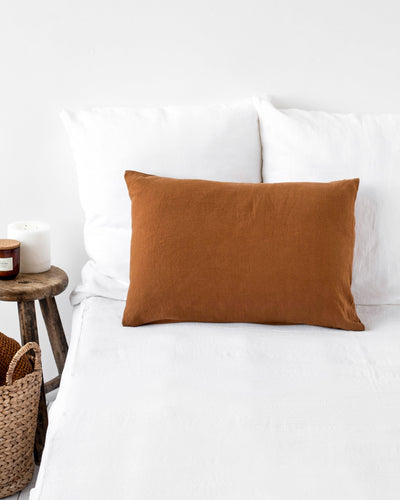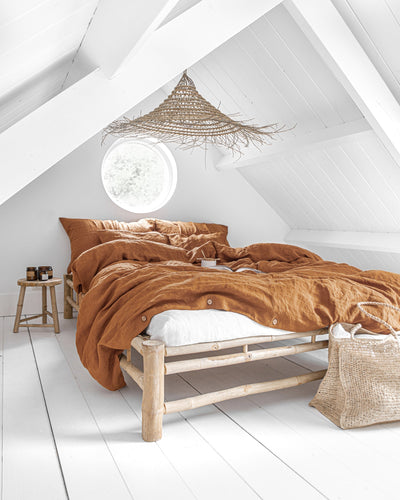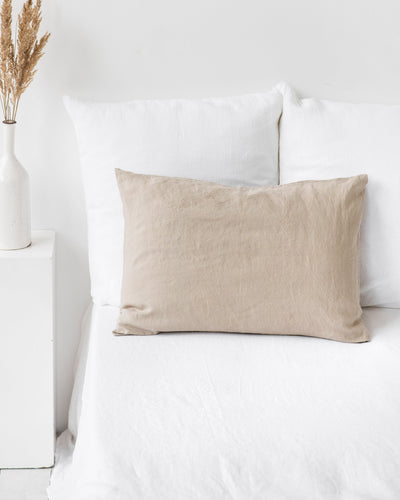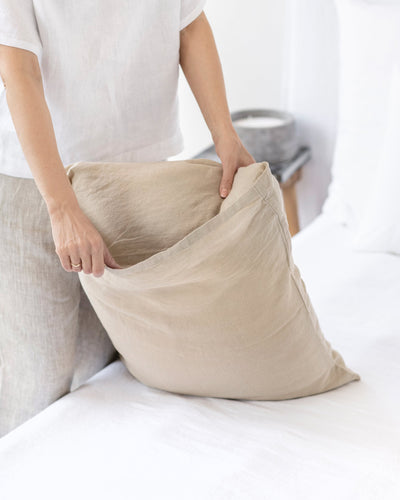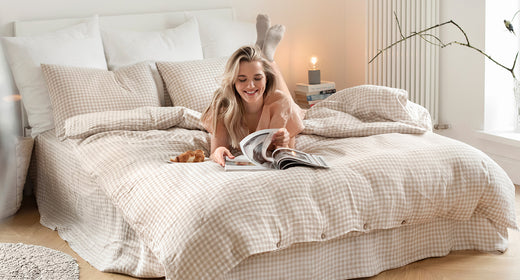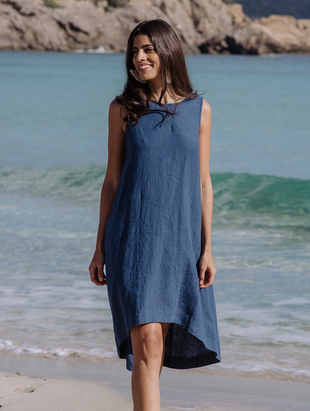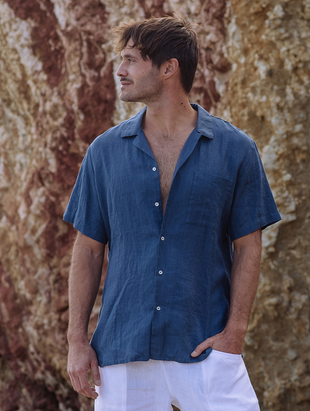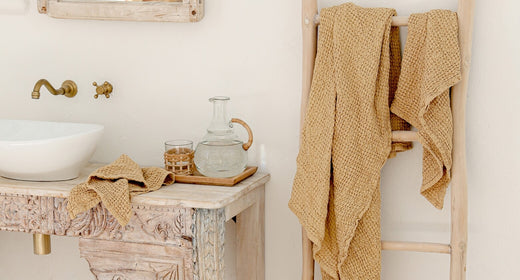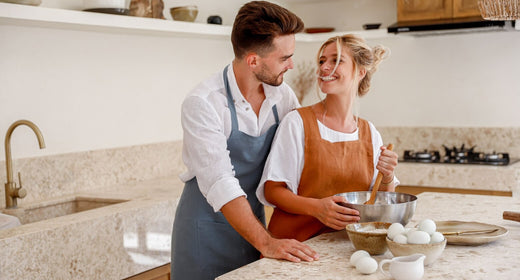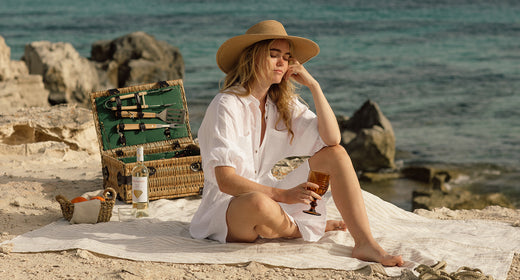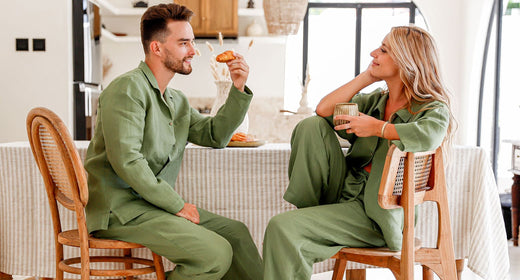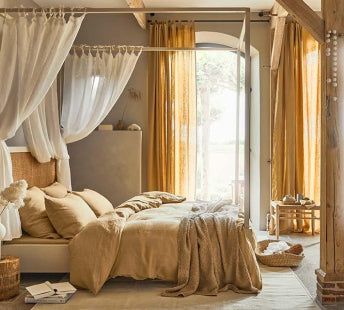1950s Women's Fashion: Iconic Looks & Timeless Trends

Key Takeaways
-
Women's fashion in the 1950s was defined by polished elegance, feminine silhouettes, and attention to detail that still influences style today.
-
Popular 1950s clothing styles included full-skirted swing dresses, pencil skirts, tailored suits, and capri pants for casual wear.
-
Icons like Audrey Hepburn, Marilyn Monroe, and Grace Kelly helped shape 1950s fashion with their unforgettable looks.
The 1950s weren't perfect. It was a decade marked by rigid gender roles and limited freedoms for many. But if there's one thing the era got undeniably right, it was the fashion.
For all its cultural contradictions, the 1950s produced some of the most striking and memorable styles in modern history. As has long been the case, women's fashion stood out as the most layered and artful part of the style story.
The influence of 1950s women's fashion continues to be seen in our everyday wardrobes, on red carpets, and even in couture collections at fashion weeks around the world.
Defining Features of 1950s Women's Fashion
The defining silhouette of 1950s women's fashion was the hourglass shape with an emphasis on a cinched waist, full hips, and bust. This shape was typically highlighted either by a dramatic full skirt or a sleek pencil skirt. In general, dresses and suits were meticulously tailored to create a wasp-waist effect, often with the help of structured undergarments, like corsets, girdles, and cone bras, in order to achieve the ideal 36-26-36 figure.
After years of wartime simplicity, Christian Dior's 1947 "New Look" brought back a feminine style with small waists and full skirts. This look shaped 1950s women's fashion, and even as styles changed, the hourglass figure stayed popular.


Popular Clothing Styles of the 1950s
With the New Look silhouette as a starting point, women's fashion of the 1950s blossomed into a range of elegant styles for every occasion. Among the various popular styles, the following perfectly embody 50s fashion:
Swing dresses and full skirts
If you imagine a classic '50s dress, you're likely picturing a swing dress: a fitted top with a cinched waist and a voluminous, mid-calf skirt that swishes as you walk. These dresses, often worn with layers of crinoline underneath, created the iconic fit-and-flare shape that defined early 1950s women's fashion. They were the go-to look for daytime events, parties, and even Sunday church.
Many came in cheerful floral prints or playful polka dots for casual wear, while fancier versions used satin, silk, or taffeta for evening occasions.
Swing dresses often featured feminine details like sweetheart necklines, bow accents, or halter tops. A popular variation was the shirtwaist dress, which looked like a button-down blouse on top and a flared skirt on the bottom—a style that became a favorite for housewives and still inspires modern shirt dresses today.
There were also the famous poodle skirts—colorful felt skirts decorated with fun motifs like poodles. These became a teen trend in the mid-50s and are still a classic symbol of 1950s fashion.


Pencil skirts and tailored suits
For a more streamlined look, women turned to pencil skirts and tailored suits. Pencil skirts hugged the hips and narrowed toward the knees, creating what was sometimes called a "wiggle" silhouette—because they were tight enough to slightly restrict your stride. Modern pencil skirts still follow this shape, though today's versions tend to hit just above the knee for more flexibility.
Suits also followed the same rules of refinement. Women wore coordinated sets with tailored jackets and either slim or softly flared skirts.
Evening gowns and glamour
Evening gowns from this era are the epitome of red-carpet glam: strapless bodices, dramatic full skirts, and lots of tulle or satin. These gowns were designed to turn heads, often adorned with sequins, lace, or embroidery, and they brought a touch of Hollywood to real-life galas and formal events.
One of the most popular styles was the strapless ballgown, which balanced the fullness of the skirt with a bare neckline, perfect for showing off a statement necklace.
The cocktail dress also made its debut in this decade. These shorter, knee-length dresses were designed for semi-formal parties and became a stylish middle ground between daywear and formal gowns.
Hollywood stars like Grace Kelly and Elizabeth Taylor set the tone with glamorous red carpet looks, and their fashion choices still inspire modern designers and vintage lovers alike.
Casual wear: capri pants and day dresses


Not all 1950s outfits were fancy—casual fashion became popular, too, offering stylish but comfortable clothes for everyday life.
The shirtwaist dress was the casual staple of the time. It's the same basic style you might find in retro-inspired brands today, especially those marketing easy summer dresses. They were usually made of cotton and came in bright prints like polka dots, gingham, or florals—comfortable yet polished and very "put together" by 50s standards.
Perhaps the most surprising trend was the growing popularity of pants for women. Capri pants, which ended mid-calf, became a fashionable choice for off-duty moments. Movie stars like Audrey Hepburn helped normalize the look, often pairing slim black capris with ballet flats and a tucked-in blouse.
Other casual pieces included high-waisted cigarette pants, Bermuda shorts, and twinsets.
Accessories That Completed the Look
In the 1950s, fashion meant looking fully put together, and that meant no skipping on handbags or gloves. Some of the accessories that defined the decade and helped complete that iconic mid-century style include:
Gloves, hats, and handbags
Gloves were a must-have in a woman's wardrobe. Worn during the day, at night, and everywhere in between, gloves added a touch of elegance—even for something as simple as a trip to the store. Daytime gloves were typically wrist-length, often in white or beige to match an outfit, while evening events called for longer styles like opera-length gloves in satin or leather.
Hats were also a regular part of going out in the 50s. Small, stylish options like pillbox hats or veiled flowerpot styles were popular during the day, often perched at an angle over neatly styled hair. For more formal events, broader-brimmed hats made a statement.
For a younger, more casual look, many women tied silk scarves around their ponytails or wore them as headbands—a style you've probably seen revived in retro-inspired outfits today.
Handbags were small, structured, and always coordinated with your shoes. A classic 1950s purse, like the Hermès "Kelly bag" made famous by Grace Kelly, was elegant and practical—just big enough for your essentials: compact, lipstick, gloves, and maybe a hankie.
Some of these vintage styles, like quilted or pearl-accented bags, remain fashion staples today.
Shoes of the 1950s
Shoes in the 1950s were just as carefully chosen as the dress itself. A polished look wasn't complete without a matching pair of heels or flats, and like everything else, there were clear style rules.
For dressier occasions, heels were the go-to choice. The stiletto heel rose to fame in the late 50s thanks to designers like Roger Vivier. Kitten heels also became popular during this time, offering a more comfortable alternative that still looked polished.
For younger women and casual days, flats were the preferred choice—ballet flats, made iconic by Audrey Hepburn, or saddle shoes paired with bobby socks. Loafers and low-heeled pumps were also common, giving women more comfort while maintaining that classic, ladylike vibe.
Jewelry trends
In the 1950s, pearls were everywhere. A simple strand of pearls, often paired with matching earrings, was the go-to look for daytime or semi-formal events. It was classy, feminine, and appropriate with almost everything—kind of like how people rely on gold hoops or dainty chains today.
But the 1950s also saw a boom in costume jewelry. Rhinestones, plastic beads, and gold-toned sets made bold accessorizing affordable and fun. Women often wore matching sets (parures) with a necklace, bracelet, earrings, and sometimes a brooch.
Statement pieces were encouraged, especially for cocktail parties and evening events. Brooches were pinned to coats, dresses, and hats, and jewelry came in all kinds of playful themes. It was all about adding personality and shine.
Hairstyles and Beauty Standards of the Era
In the 1950s, hairstyles and beauty routines were essential parts of a woman's overall appearance, designed to match the polished and feminine fashion of the era. Hair was typically styled into neat curls, soft waves, or structured shapes like the "poodle cut" or pageboy bob.
Teens often wore ponytails tied with ribbons, while style icons like Audrey Hepburn made pixie cuts popular. No matter the cut, the common theme was tidy, controlled styling that emphasized grace and femininity.
Makeup in the 1950s was a daily ritual. Women aimed for flawless, matte complexions using foundation and powder, with just a touch of blush for a healthy glow. The real focus was on the lips, especially bold red shades, which were carefully lined and matched to nail polish for a coordinated look.
Eye makeup included soft pastel shadows, winged eyeliner, and mascara on the upper lashes to create a wide-eyed effect. Eyebrows were shaped into well-defined arches, often thick and dramatic, as seen on stars like Elizabeth Taylor and Marilyn Monroe.
Beauty standards during this time reflected a cultural ideal that valued perfection, femininity, and attention to detail. Whether dressing up for a formal event or doing housework, women were expected to look presentable at all times.
These expectations were largely shaped by media portrayals of the "ideal housewife," always put together with styled hair, polished nails, and flawless makeup. While not every woman lived up to that image every day, the influence of this era still lingers in our ideas of vintage glamour.
Cultural Icons Who Defined 1950s Style
The fashion of the 1950s was largely shaped by the celebrities who defined the era's iconic looks. Actresses like Audrey Hepburn, Marilyn Monroe, Grace Kelly, and Elizabeth Taylor set the tone both on and off-screen.
Beyond the Hollywood elite, European stars added international flair. Brigitte Bardot introduced a more youthful and rebellious edge with tousled hair, off-the-shoulder tops, and the bikini, while Sophia Loren represented Mediterranean glamour with figure-hugging dresses and bold cat-eye makeup. Their styles helped expand the definition of femininity in the 50s—blending bombshell appeal with fashion-forward choices.
Other notable figures like Doris Day, Jayne Mansfield, and Queen Elizabeth II also contributed their own versions of the 50s woman, from girl-next-door charm to royal poise.
Influence of 1950s Women's Fashion on Modern Trends

Though many years have passed, the fashion of the 1950s never truly disappeared. The decade's signature looks—cinched waists and full skirts—remain popular today. Fit-and-flare dresses still show up everywhere, from designer runways to everyday shops. Brands like Carolina Herrera and Oscar de la Renta often feature 50s-inspired gowns, and party dresses with tea-length skirts are still easy to find. Even staples like the A-line skirt or shirt dress have clear roots in 1950s style.
Casual 50s pieces are also back. High-waisted pencil skirts and cropped capri pants are workwear staples now. Shirt dresses and twinsets come and go in fashion cycles. Rockabilly and pin-up subcultures have kept the 50s spirit alive more directly—with polka-dot swing dresses, cat-eye makeup, red lips, and retro swimwear. Some of these looks, like high-waisted bikinis or bold eyeliner, have even gone mainstream again.
Designers often revisit the decade for inspiration, mixing vintage shapes with modern fabrics. You'll still see cat-eye sunglasses, kitten heels, and pastel pinks pop up in stores and magazines. No matter the year, the polished, feminine vibe of 1950s women's fashion continues to inspire new generations.
1950s Women's Fashion and Linen
1950s fashion was undeniably iconic—but it wasn't always easy to wear. Tight waistlines, structured undergarments, and layers of stiff fabric made many of the era's most beautiful looks less than practical for day-to-day comfort.
Still, some high-end designers of the time experimented with softer, more breathable fabrics—like the stunning House of Givenchy Écossé linen day dress from the 1950s now held at The Met. Linen offered the same polished silhouette but with a lighter, more natural feel.
That spirit lives on in modern labels like MagicLinen, where you can find linen dresses inspired by different cuts but made for comfort. It's proof that you can channel charm without giving up comfort.
Wrapping Up
The influence of 1950s women's fashion continues to thrive in how we dress, design, and define elegance today. From swing dresses and cinched waists to pearls, red lips, and perfectly styled hair, the era's style left a lasting impression still seen in closets, couture, and culture.
Whether you love the drama of a full skirt or the charm of a shirtwaist dress, the 50s look is always worth revisiting.
Frequently Asked Questions (FAQs)
How do you dress like a 50s girl?
To dress like a 1950s girl, go for fit-and-flare dresses with cinched waists and petticoats for volume, then accessorize with gloves, pearls, and cat-eye sunglasses. For a casual look, consider high-waisted capri pants paired with a tucked-in blouse or sweater.
Which trend was popular in the 1950s?
The "New Look" by Christian Dior, featuring nipped-in waists and full skirts, was a defining trend of the 1950s, emphasizing femininity and elegance.
How would you describe a 1950s dress?
A 1950s dress typically showcased an hourglass silhouette with a fitted bodice and a voluminous skirt, often adorned with patterns like polka dots or florals and complemented by modest necklines and sleeves.
What was the biggest fad of the 1950s?
The poodle skirt became an iconic fad of the 1950s, especially among teenage girls, featuring a wide swing felt skirt with a poodle appliqué, often worn with bobby socks and saddle shoes.
 United States
United States


